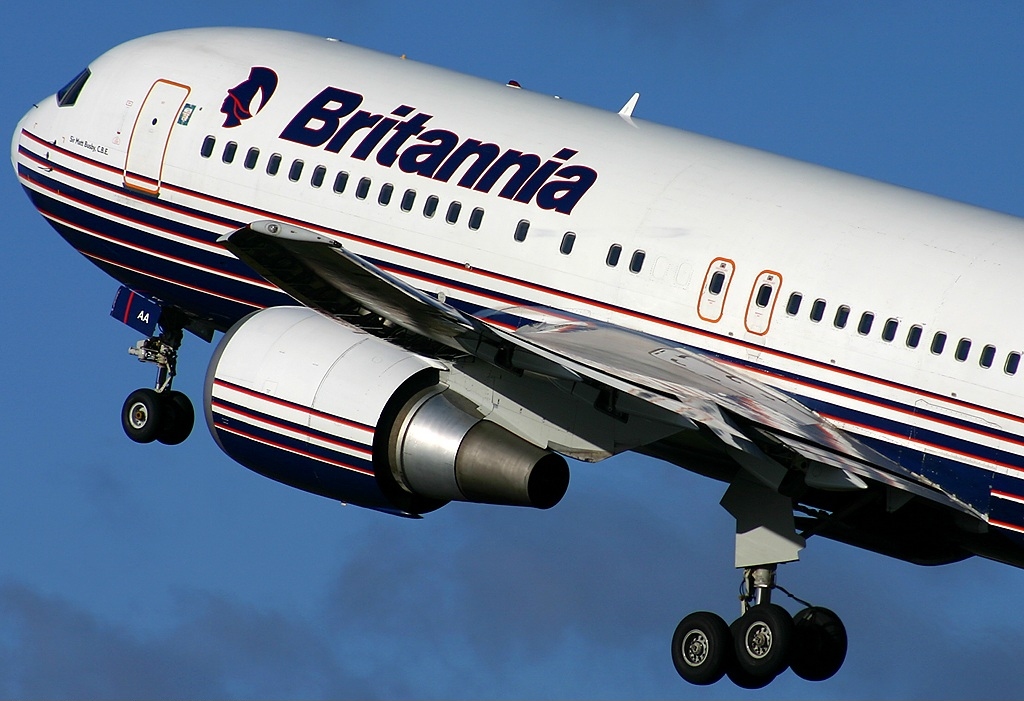Warm spring weather in England has made me nostalgic for the classic years of the package tour to the sun. One airline stood out in the crowd as shorthand for quality, and that was Britannia Airways.
Britannia Airways was formed in 1961 as Euravia, to provide the airline component of package tours sold by Universal Sky Tours. It was based at Luton airport and started flying in May 1962 with a trio of second-hand piston-powered Lockheed Constellations, which less than a decade earlier had been the most prestigious airliner in the world, a graceful flagship for the likes of BOAC and TWA, but quickly overtaken by the jet revolution. By 1964, Euravia were flying eight Connies as well as four Avro Yorks, lumbering war-era military transports. Britannia Airways was born that year, as Euravia re-equipped with another cast-off from the late propeller age, the Bristol Britannia, and changed their name to mark the occasion.
The eleven Britannias saw the airline through the remainder of the 1960s, as it was purchased by Lord Thompson, a newspaper magnate looking to diversify, and in arenas which would benefit the general public. Running a package tour operator for Brits to travel abroad, many for the first time ever, was a perfect match for his ambitions.
In 1968, Britannia made history by being the first airline in Europe to buy the Boeing 737-200, receiving their first jet, G-AVRL, on June 28, despite significant government pressure to buy British (either the BAC-111 or the Trident).
In the early 1970s, Britannia got into the long haul business with a duo of Boeing 707-300Cs, which flew mostly transatlantic. In those days of tight regulation protecting state-owned national carriers, budget travelers flew on leisure airlines operating ‘affinity charters’ for travel clubs and other special interest groups (some of which were formed purely to get around these restrictions, with backdated membership cards to fictitious organisations given out on the day of travel).
The 707s didn’t last long – early 1971 until spring 1973 – but by 1972 Britannia was Britain’s largest leisure airline, and by 1975 was operating a fleet of thirteen 737-200s to the sun.
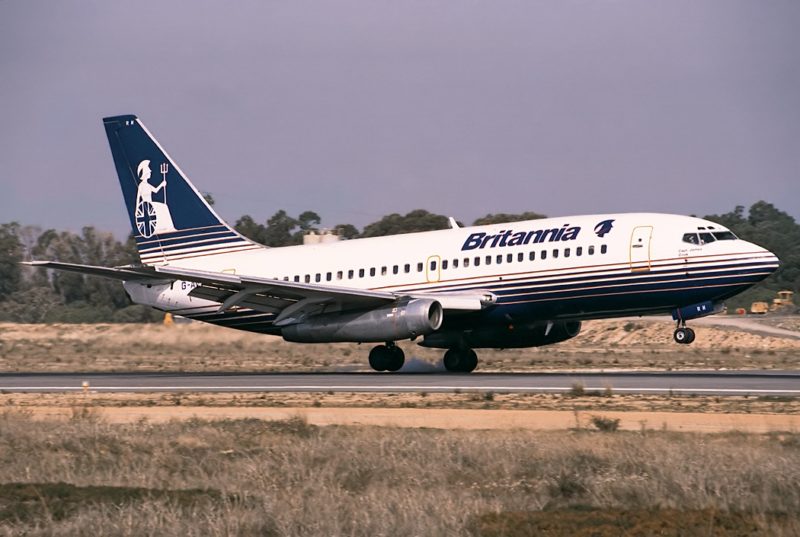
The 1980s was a golden age for package holidays, and for Britannia, as they made history with a new Boeing once again by being the first European airline to operate the widebody 767. With Britain’s economy booming thanks to financial deregulation and the discovery of North Sea oil, Mediterranean holidays became affordable for everyday families.
The skylines of resort coastlines in Spain, Greece, and Italy raced skyward, and every summer, the suburbs of Britain emptied as young singles and couples flew aboard to party, and families to find a slice of get-away-from-it-all paradise. Gatwick, Luton, and provincial airports thronged with leisure travelers clad in the neon fashion of the era, soundtracked with new Walkman person stereos.
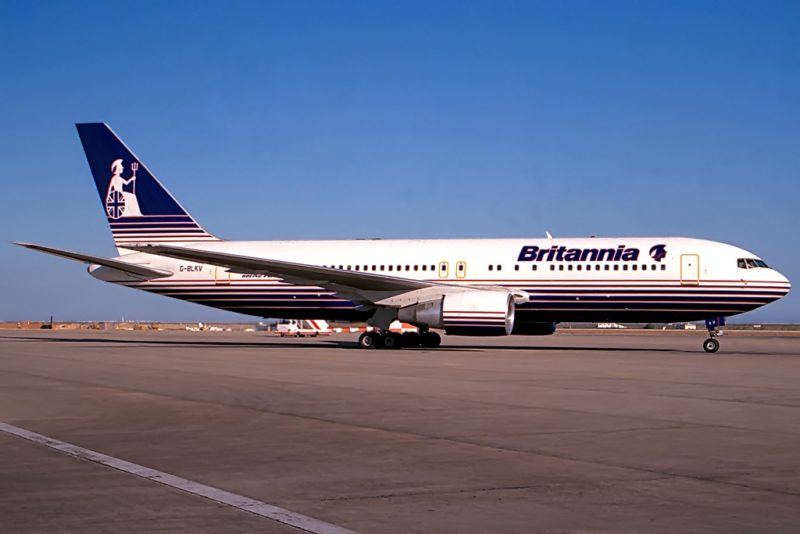
It’s hard to imagine a world without the Persian Gulf mega-carriers but as recently as the 1990s, the UK to Australia market was dominated by Qantas with two 747s a day to London, and British Airways, whose 747s not only served Sydney but also Melbourne, Brisbane, Adelaide and Perth. Britannia joined the Kangaroo Route in 1988 and started flying 767s to Australia via Sharjah and Singapore, serving one of the biggest VFR markets in the world – visiting friends and relatives.
The 1990s saw the advent of a more ambitious leisure clientele. The Med was no longer exotic, and British holidaymakers set their sights on the white sands and wafting palms of the Caribbean and Thailand. By 1997, a third of Britannia’s flying was long haul. To meet the expectations of their most demanding customers, Britannia introduced a premium cabin, of a quality similar to that offered by the best scheduled airlines in Europe, branded Royal Service.
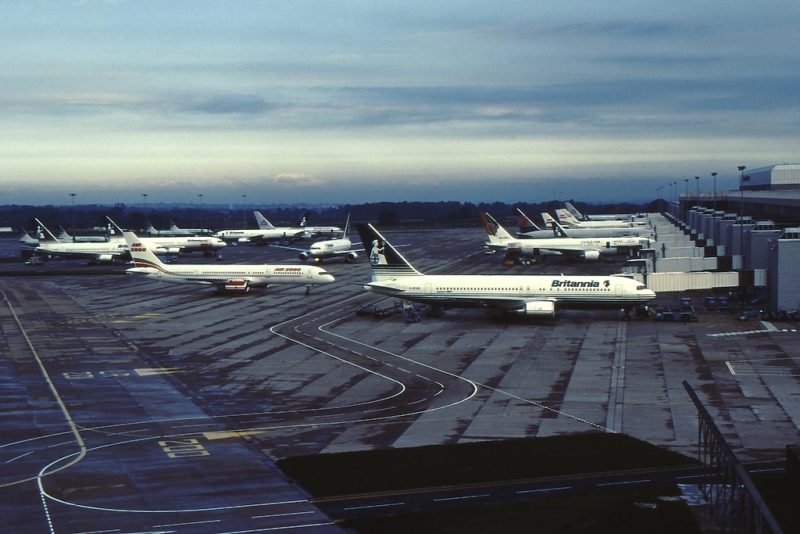
Thanks to harmonisation of regulations made possible by closer European Union integration, Europe’s airline market was deregulated in the mid 1990s which gave rise to the Low Cost Carrier, the LCC, starting with easyJet in 1996. By the turn of the century and the advent of the internet, travelers were confident enough to book their own accommodation and figure out their own local logistics, and no longer needed a tour operator to make the arrangements.
easyJet went from a pair of ex-GB Airways 737-200 smokers to over 300 A320 family Airbus aircraft, and Ryanair from a handful of Romanian-built BAC-111s to 500 Boeing 737-800s (and a sole -700 for pilot training), fleet sizes that dwarfed not only the likes of Britannia but the entire leisure fleets of 1980s western Europe combined.
German travel giant TUI bought Thomson Travel Group including Britannia Airways in 2000, which was rebranded Thomsonfly in September 2004, ending a great British aviation brand. Further integration and a merger with First Choice Airways resulted in the consolidated airline becoming TUI Airways in 2015.
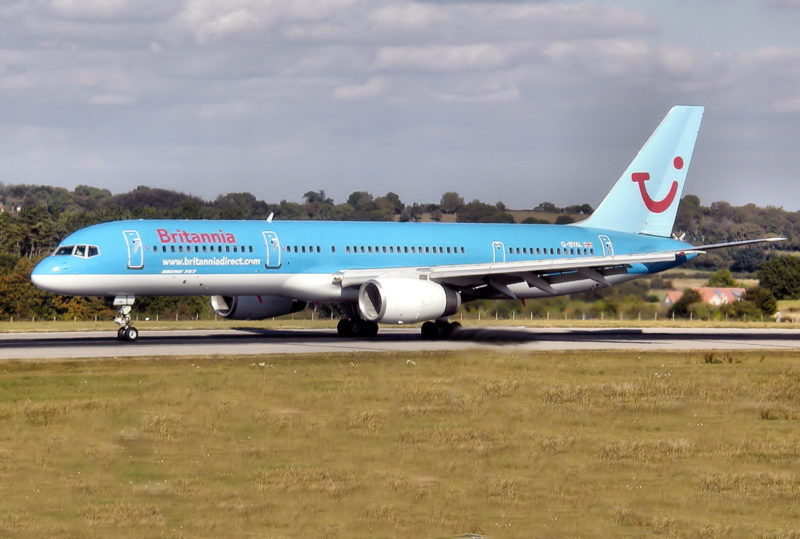
The delights of the 1980s inclusive package tour, when international travel was much less accessible to the average person, might seem a bit pedestrian compared to the free range possibilities of today, but whatever they lacked in variety or local authenticity, they made up for with a bit of innocence and wide-eyed enthusiasm for a new world that was just getting started. There were plenty of other British airlines who played their role, but none as classy as Britannia Airways.
Cover Image: Wikimedia Commons/Dan Coleman


